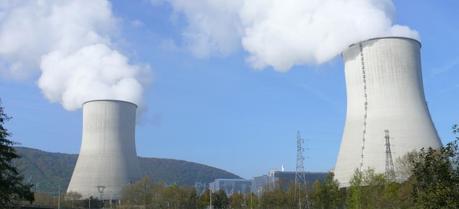 Chooz Nuclear Power Station in Ardennes, France. (Credit: MOSSOT http://commons.wikimedia.org/wiki/User:MOSSOT)
Chooz Nuclear Power Station in Ardennes, France. (Credit: MOSSOT http://commons.wikimedia.org/wiki/User:MOSSOT)
According to the EIA, as of 2012, nuclear generating units have reached a global capacity of 370 gigawatts (GW). Currently, 31 countries have nuclear power programs. From the early 1970s to the early 1990s, nuclear power steadily grew around the world, with brief periods of relatively slow growth following the accidents at Three Mile Island (1979) and Chernobyl (1986), as the nuclear industry absorbed the lessons learned from both incidents.
With the exception of the developing economies in Asia, nuclear power capacity remained relatively stable between the mid 1980s until the accident at the Fukushima Daiichi reactor in March of 2011. Following the accident at Fukushima, nuclear industry reactions to the accident varied widely. Italy canceled its plans to build new nuclear power plants. Germany announced the shutdown of all nuclear power plants by 2022, and is moving in the general direction towards taking the conventional electricity generation off the grid—with some electrical grid stability issues as the result of it. Currently, Germany is actively developinggrid-scale energy storage technologies to solve the problem. China—where plans for large increases in nuclear capacity had been announced—instituted a temporary moratorium on new approvals for nuclear power construction that lasted 20 months before it was lifted at the end of October 2012. Today China accounts for 47% of global coal consumption and is on track to become the world’s largest oil importer.
Many countries, including the United States, have revised or are in the process of revising their safety regulations to address the lessons learned from the accident at Fukushima. In Japan, where all but two of the country’s 50 reactors remain shut down, the issuance of new safety standards in July 2013 has led to applications to restart several reactors.
Still, according to a recent IAEA study, the world’s nuclear power generating capacity is projected to continue to grow by 2030. This year’s low projection indicates 17% growth in world total nuclear power capacity by 2030, while the high projection suggests a 94% growth, i.e. nearly a doubling in global generation capacity.
Regional trends:
- North America. The first fully commercial nuclear power plant, Dresden Unit 1, was built in the United States. Dresden Unit 1, located in Illinois, had a capacity of 250 Megawatts electric (MWe) and operated from 1960 to 1978. Canada soon followed with its first reactor in 1962. Nuclear capacity grew quickly between 1970 and 1995. The United States is currently constructing five new nuclear power plants, and in 2012, Canada issued the first site preparation license in 30 years for construction of up to four new nuclear power plants.
- Europe. France, Belgium, Germany, Sweden, Italy, and the United Kingdom commissioned nuclear power plants in the 1960s. Since 1995, capacity in Europe has remained relatively stable. Additions of new capacity through construction of new nuclear power plants have often been offset by nuclear power plant retirements. Although Germany is shutting down all of its nuclear power plants, several countries, including France and the United Kingdom, are constructing or have announced plans to construct new nuclear power plants.
- Eurasia and Asia. Russia and Japan also built and operated commercial nuclear power plants in the 1960s. Asia has added nuclear capacity in more recent decades. Between 1980 and 2012, nuclear capacity in Asia nearly quadrupled, led primarily by Korea, Japan, and India. More recently, growth in nuclear capacity in Asia has been led primarily by China. Between 2010 and 2012, nine new reactors began operating in this region. The amount of planned new nuclear capacity in North America and Europe is relatively small in comparison to the planned capacity in countries including Russia, Japan, China, Korea, and India.
There are 69 nuclear power reactors under construction around the world, mostly in Asia where electricity demand is increasing in developing economies. New nuclear capacity is based on projected increased electricity demand in rapidly developing countries coupled with energy security awareness and the desire to limit carbon emissions. More information about future growth in nuclear power is available on a regional basis in EIA’s International Energy Outlook 2013 and on a country-specific basis through IAEA’s Power Reactor Information System.
Principal contributors to the original article: Nancy Slater-Thompson, Marta Gospodarczyk

